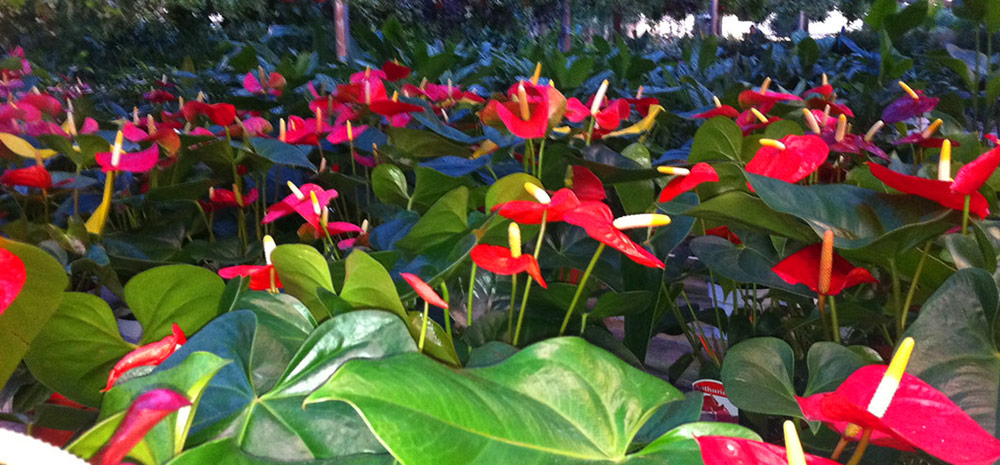Anthurium Plant Profile
Overview:
Anthuriums, commonly known as “Flamingo Flowers” or “Laceleaf,” are cherished for their vibrant, heart-shaped spathes and glossy green foliage. These tropical plants add a pop of color and elegance to any indoor space. While Anthuriums are relatively low-maintenance, understanding their specific care needs will help them thrive and produce beautiful blooms.
Light Needs for Anthuriums
Anthuriums thrive in bright, indirect light, which mimics the dappled sunlight they receive in their native rainforest habitats. Direct sunlight should be avoided as it can cause the leaves and spathes to scorch. In lower light conditions, Anthuriums may produce fewer flowers but can still maintain healthy foliage.
- Ideal Placement: Near a north or east-facing window where the plant receives plenty of filtered light.
Best Soil Type for Anthuriums
Anthuriums prefer a well-draining, loose potting mix that can retain some moisture while allowing excess water to drain away. A mix that includes peat moss, perlite, and pine bark is ideal, providing the right balance of aeration and moisture retention.
- Recommended Soil Mix: 1 part peat moss, 1 part perlite, 1 part pine bark.
Watering Guidelines for Anthuriums
Water your Anthurium when the top inch of soil feels dry. These plants prefer consistently moist soil, but overwatering can lead to root rot. Ensuring the pot has adequate drainage is essential to prevent water from pooling at the bottom.
- Frequency: Approximately once a week during the growing season; reduce watering in the winter when growth slows.
Ideal Humidity and Temperature for Anthuriums
Anthuriums thrive in environments with high humidity levels, ideally between 60-80%. They also prefer warm temperatures, ranging from 65-80°F. Low humidity can cause the leaves to develop brown tips, so it’s important to maintain moisture in the air around the plant.
- Humidity: Use a humidifier, mist the leaves regularly, or place the plant on a pebble tray with water.
- Temperature: Keep in a warm room, away from cold drafts and air conditioning vents.
Fertilization for Anthuriums
Feed your Anthurium with a balanced, water-soluble fertilizer every 6-8 weeks during the growing season (spring and summer). Anthuriums benefit from a fertilizer with a higher phosphorus content to encourage blooming. Reduce feeding during the fall and winter months.
- Recommended Fertilizer: A balanced 10-30-10 NPK fertilizer diluted to half strength.
Difficulty Level / Ease of Care
Anthuriums are relatively easy to care for, making them suitable for both beginners and experienced plant enthusiasts. Their needs are straightforward, but attention to humidity and watering will ensure they remain healthy and vibrant.
- Difficulty Level: Easy to Moderate
Rarity of Anthuriums
Anthuriums vary in rarity, with some species being more common and others, such as the Anthurium clarinervium or Anthurium regale, being rarer and more sought after by collectors.
- Rarity: Common to Rare (depending on the variety)
Anthurium Varieties
Anthuriums come in a wide range of varieties, each offering unique colors, shapes, and textures. Here are some popular and rare varieties:
- Anthurium andraeanum (Flamingo Flower): Known for its bright red spathes and glossy green leaves; a classic and widely available variety.
- Anthurium clarinervium: Features large, heart-shaped, velvety leaves with prominent white veins; a rare and highly desirable variety.
- Anthurium regale: A rare variety with massive, velvety leaves and striking white veining.
- Anthurium ‘Black Queen’: A rare cultivar with dark, almost black spathes that contrast beautifully with its green foliage.
- Anthurium ‘Jungle King’: Known for its robust, deep green leaves and compact growth habit, making it perfect for smaller spaces.
Understanding Anthurium Variegation
Variegation in Anthuriums is less common but highly prized when it occurs. Variegated Anthuriums display unique patterns of white, cream, or lighter green against the standard green foliage, making them stand out even more. This variegation is usually due to a genetic mutation that affects chlorophyll production.
- Care Tip: Variegated Anthuriums may require more light than their non-variegated counterparts to maintain their color patterns, but avoid direct sunlight to prevent leaf burn.
Common Problems and Solutions
Anthuriums are generally hardy, but they can encounter some issues if their care needs are not met. Here are some common problems and how to address them:
- Yellowing Leaves: Often a result of overwatering. Ensure proper drainage and allow the soil to dry out between waterings.
- Brown Leaf Tips: Typically caused by low humidity. Increase humidity levels around the plant.
- Lack of Blooms: Could be due to insufficient light or nutrients. Ensure the plant receives bright, indirect light and feed regularly during the growing season.
How to Propagate Anthuriums
Anthuriums can be propagated through division or by separating offsets from the main plant. Propagation is best done during repotting.
- Propagation Method: Gently divide the root ball or separate offsets, ensuring each section has healthy roots and foliage.
Step-by-Step Propagation Guide:
- Remove the Anthurium from its pot and carefully separate the root ball or offsets.
- Plant each division or offset in fresh, well-draining soil.
- Water lightly and place in a warm, humid environment until established.
Anthurium Care Summary
Anthuriums are a vibrant and elegant addition to any indoor space, offering striking flowers and lush foliage. With proper care, including attention to light, humidity, and watering, these plants can thrive and bloom for years. Whether you’re growing a common Flamingo Flower or a rare Anthurium clarinervium, these tips will help you keep your plant healthy and beautiful.




 All Plants
All Plants Alocasias
Alocasias Anthuriums
Anthuriums Monstera
Monstera Philodendrons
Philodendrons Rare & Exotic Plants
Rare & Exotic Plants Succulents & Cacti
Succulents & Cacti Beginner
Beginner Intermediate
Intermediate Expert
Expert Low Light
Low Light Bright Indirect
Bright Indirect Direct Sun
Direct Sun New Arrivals
New Arrivals Best Sellers
Best Sellers On Sale
On Sale




